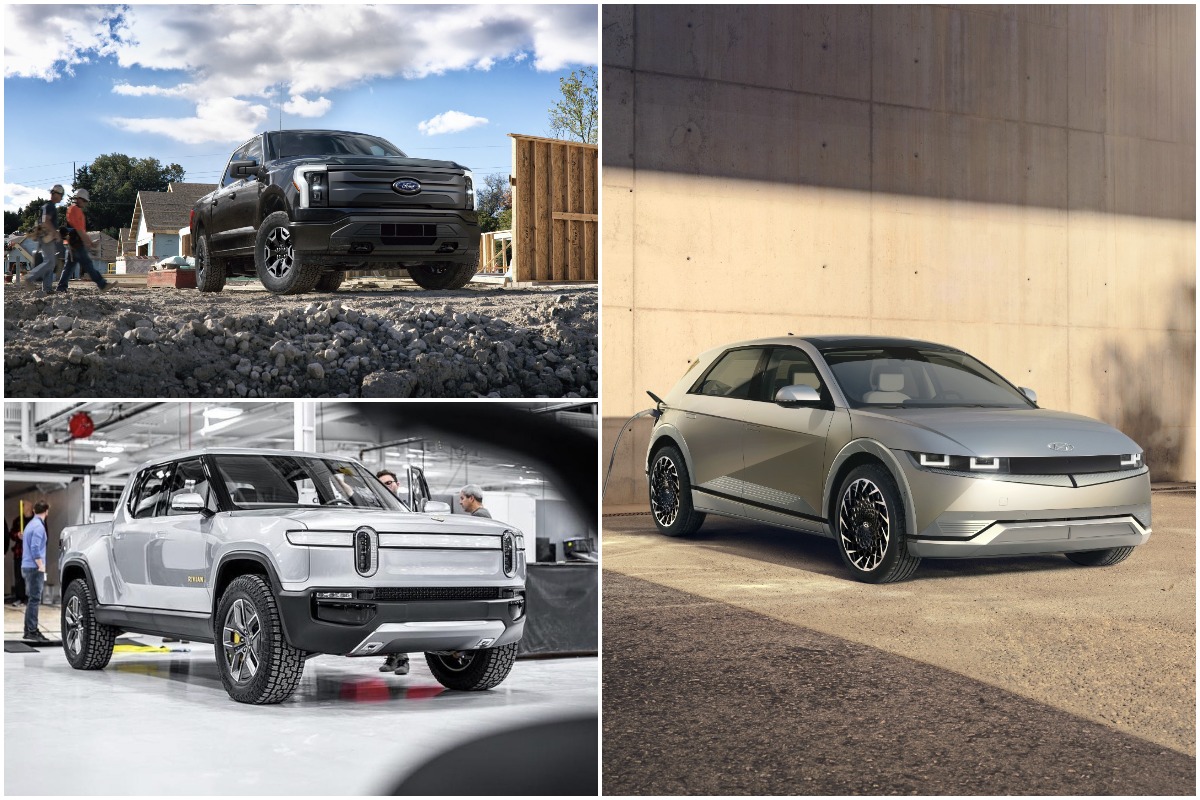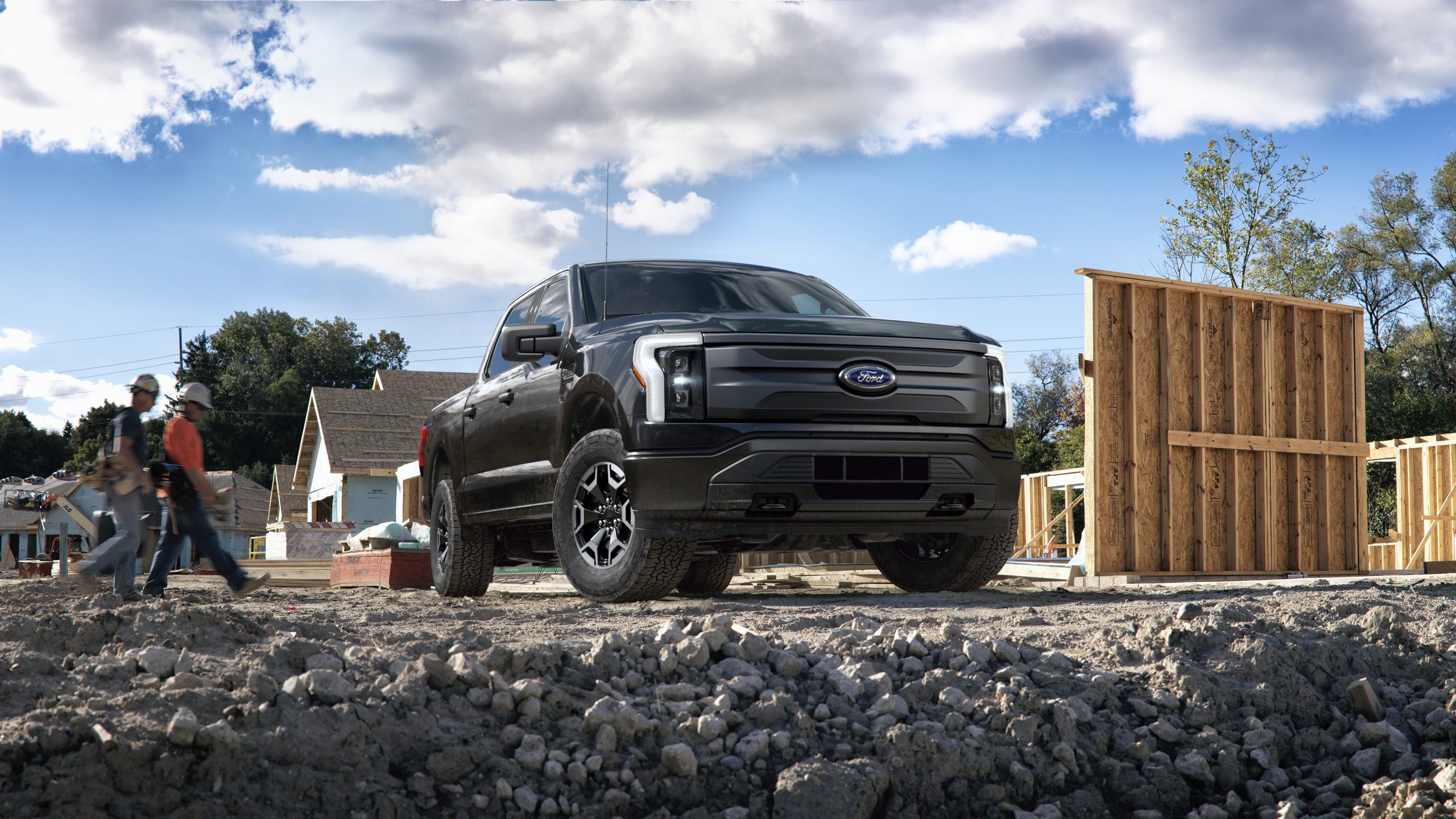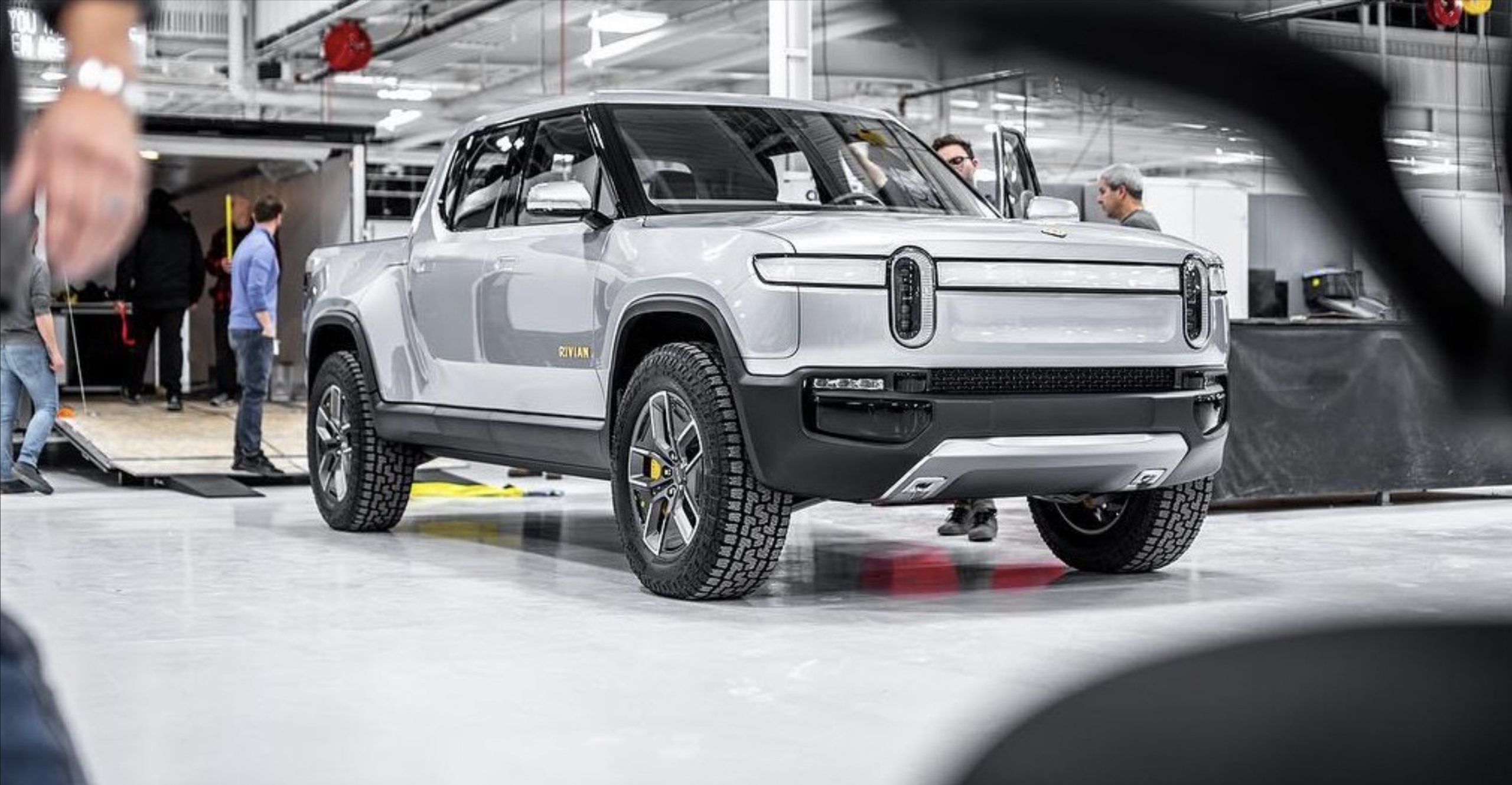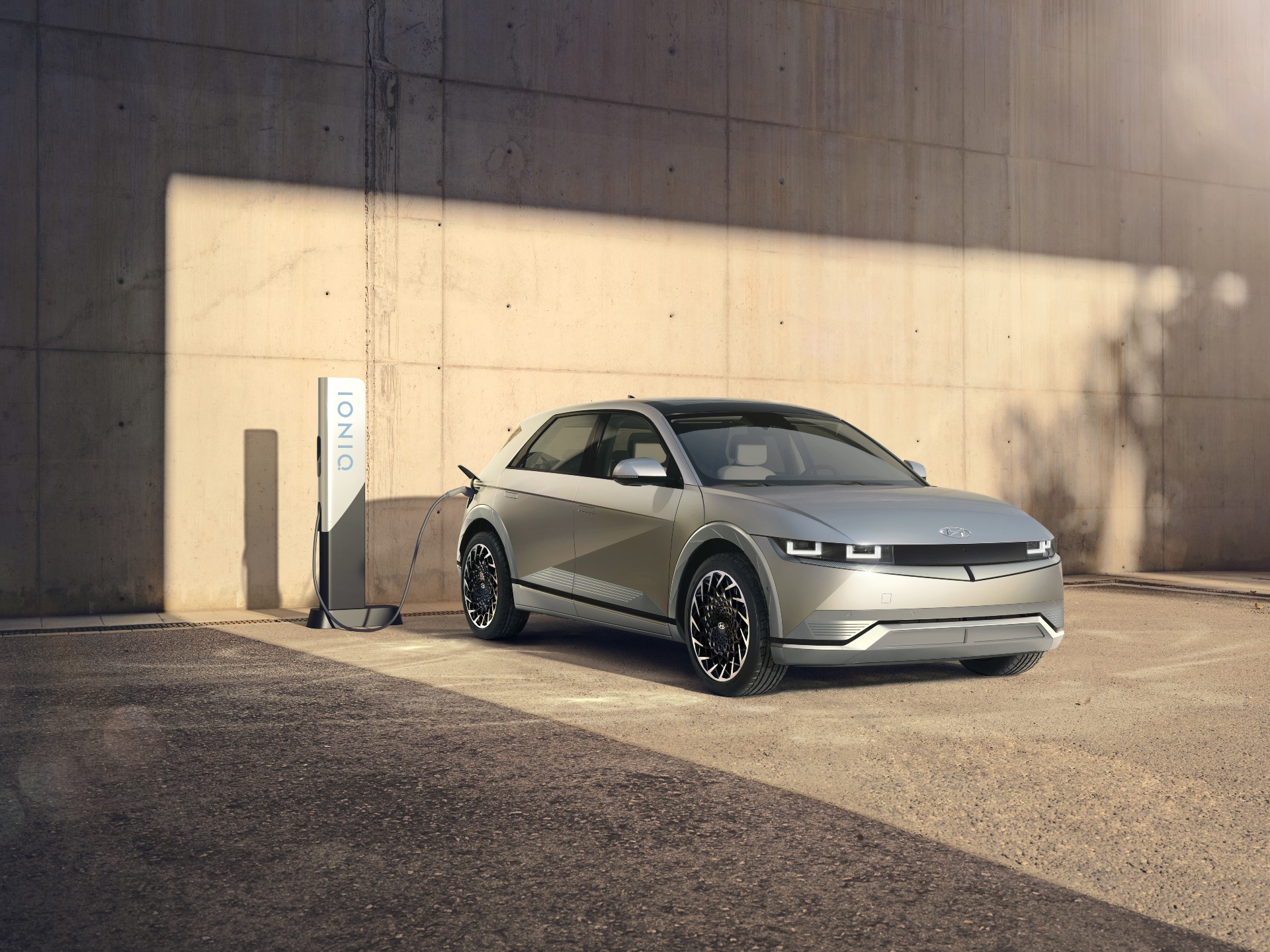

News
Ford F-150 Lightning, Rivian R1T, Hyundai Ioniq 5 land on AutoTrader’s ‘Best New Cars for 2022’
Three of the electric automotive sector’s newest additions have landed on AutoTrader’s list of “Best New Cars for 2022.” The Ford F-150 Lightning and Rivian R1T, two of the EV sector’s freshest pickups, along with the Hyundai Ioniq 5 SUV, landed on the list, which featured the twelve best vehicles based on a team of experts “who collectively tested and ranked new models using a range of criteria.”
AutoTrader said in its release of the list that with so many great and competitive options on the market today, car buying is more confusing than ever. As the industry is beginning to shift toward a more pivotal role for electric cars, the list hand selects the twelve most competitive choices based on over 300 options.
“While electric vehicles, driver-assist technology, and fun, efficient, affordable gasoline-powered cars aren’t necessarily new things for car shoppers, the sheer amount of choices drivers now have really stands out as new for 2022,” Executive Editor for Autotrader Brian Moody said. “Automakers are building a wider variety of vehicle types with each passing year. A great example is electric vehicles – now there are many good all-electric cars in a variety of prices, shapes and sizes. In fact, one-third of our Best New Cars list this year is made up of electric vehicles, and two of those are trucks.”
Ford F-150 Lightning

(Credit: Ford Motor Company)
Perhaps the most anticipated EV release of this year will be the Ford F-150 Lightning. As the electric pickup sector begins to heat up with recent releases from GMC and Rivian, Ford, the undisputed leader of the American pickup truck sector, will have its say in what the best electric truck will be later this year. Deliveries are slotted for Spring 2022, and Ford opened the Order Bank for customers to finalize their trim packages in January. AutoTrader says:
“Combining the popularity of the F-150 pickup with the capability off an all-electric vehicle creates a real winner. With Ford’s Intelligent Backup Power, over-the-air software updates, and 11 power outlets available, this version of the F-150 is the perfect tool for both consumers and contractors. Bonus points for the large ‘Frunk.’”
Rivian R1T

(Credit: Rivian)
Rivian’s initial vehicle, the R1T pickup, technically started deliveries last year. However, 2022 is where the truck will really make its mark as the young and scrappy Rivian begins to ramp production of the R1T at its plant in Normal, Illinois. Rivian is backed by Amazon, which means their cash flow is basically limitless and they have backing from several other notable companies. The R1T is really the perfect outdoor truck as Rivian’s whole goal was to cater to those who love to adventure. AutoTrader says:
“Pickups and SUVs have been a sort of blind spot when it comes to electric vehicles, as their size and weight (and often the demands placed on trucks) make them poor candidates for all-electric power. But now, Rivian has opened that door. Like Tesla, Rivian isn’t a long-standing legacy automaker, yet it has created a very compelling electric vehicle that looks good and performs well. The Rivian R1T isn’t a concept or plan or a “someday” electric truck – it is here now making its way into consumers’ hands, and it is very good.”
Hyundai Ioniq 5

Credit: Hyundai
Hyundai is not necessarily too discussed in the EV sector, but the Ioniq 5 is certainly a vehicle worth talking about. The company has plenty of plans to expand its electrification footprint across the world. In 2028, Hyundai plans to have at least six new electric vehicles on the market in India. However, the company has discussed hydrogen technology as a possible route on several occasions, a move that many pure-EV enthusiasts will challenge on any occasion. AutoTrader says:
“Electric vehicles have matured beyond just traditional gasoline cars fitted for electric powertrains later in life. Now, cars like the Hyundai Ioniq 5 are purpose-built EVs designed to be electric from the very beginning. This matters because when you eliminate the need for a large gas tank and delete a huge chunk of metal from between the two front wheels, the designer is freer to make dramatically different choices in terms of the car’s overall look, interior space and technology. And our editors like the way the Ioniq 5 looks.”
The full list is available here.
I’d love to hear from you! If you have any comments, concerns, or questions, please email me at joey@teslarati.com. You can also reach me on Twitter @KlenderJoey, or if you have news tips, you can email us at tips@teslarati.com.

Elon Musk
Elon Musk’s X will start using a Tesla-like software update strategy
The initiative seems designed to accelerate updates to the social media platform, while maintaining maximum transparency.

Elon Musk’s social media platform X will adopt a Tesla-esque approach to software updates for its algorithm.
The initiative seems designed to accelerate updates to the social media platform, while maintaining maximum transparency.
X’s updates to its updates
As per Musk in a post on X, the social media company will be making a new algorithm to determine what organic and advertising posts are recommended to users. These updates would then be repeated every four weeks.
“We will make the new 𝕏 algorithm, including all code used to determine what organic and advertising posts are recommended to users, open source in 7 days. This will be repeated every 4 weeks, with comprehensive developer notes, to help you understand what changed,” Musk wrote in his post.
The initiative somewhat mirrors Tesla’s over-the-air update model, where vehicle software is regularly refined and pushed to users with detailed release notes. This should allow users to better understand the details of X’s every update and foster a healthy feedback loop for the social media platform.
xAI and X
X, formerly Twitter, has been acquired by Elon Musk’s artificial intelligence startup, xAI last year. Since then, xAI has seen a rapid rise in valuation. Following the company’s the company’s upsized $20 billion Series E funding round, estimates now suggest that xAI is worth tens about $230 to $235 billion. That’s several times larger than Tesla when Elon Musk received his controversial 2018 CEO Performance Award.
As per xAI, the Series E funding round attracted a diverse group of investors, including Valor Equity Partners, Stepstone Group, Fidelity Management & Research Company, Qatar Investment Authority, MGX, and Baron Capital Group, among others. Strategic partners NVIDIA and Cisco Investments also continued support for building the world’s largest GPU clusters.
News
Tesla FSD Supervised wins MotorTrend’s Best Driver Assistance Award
The decision marks a notable reversal for the publication from prior years, with judges citing major real-world improvements that pushed Tesla’s latest FSD software ahead of every competing ADAS system.

Tesla’s Full Self-Driving (Supervised) system has been named the best driver-assistance technology on the market, earning top honors at the 2026 MotorTrend Best Tech Awards.
The decision marks a notable reversal for the publication from prior years, with judges citing major real-world improvements that pushed Tesla’s latest FSD software ahead of every competing ADAS system. And it wasn’t even close.
MotorTrend reverses course
MotorTrend awarded Tesla FSD (Supervised) its 2026 Best Tech Driver Assistance title after extensive testing of the latest v14 software. The publication acknowledged that it had previously criticized earlier versions of FSD for erratic behavior and near-miss incidents, ultimately favoring rivals such as GM’s Super Cruise in earlier evaluations.
According to MotorTrend, the newest iteration of FSD resolved many of those shortcomings. Testers said v14 showed far smoother behavior in complex urban scenarios, including unprotected left turns, traffic circles, emergency vehicles, and dense city streets. While the system still requires constant driver supervision, judges concluded that no other advanced driver-assistance system currently matches its breadth of capability.
Unlike rival systems that rely on combinations of cameras, radar, lidar, and mapped highways, Tesla’s FSD operates using a camera-only approach and is capable of driving on city streets, rural roads, and freeways. MotorTrend stated that pure utility, the ability to handle nearly all road types, ultimately separated FSD from competitors like Ford BlueCruise, GM Super Cruise, and BMW’s Highway Assistant.
High cost and high capability
MotorTrend also addressed FSD’s pricing, which remains significantly higher than rival systems. Tesla currently charges $8,000 for a one-time purchase or $99 per month for a subscription, compared with far lower upfront and subscription costs from other automakers. The publication noted that the premium is justified given FSD’s unmatched scope and continuous software evolution.
Safety remained a central focus of the evaluation. While testers reported collision-free operation over thousands of miles, they noted ongoing concerns around FSD’s configurable driving modes, including options that allow aggressive driving and speeds beyond posted limits. MotorTrend emphasized that, like all Level 2 systems, FSD still depends on a fully attentive human driver at all times.
Despite those caveats, the publication concluded that Tesla’s rapid software progress fundamentally reshaped the competitive landscape. For drivers seeking the most capable hands-on driver-assistance system available today, MotorTrend concluded Tesla FSD (Supervised) now stands alone at the top.
News
Elon Musk’s Grokipedia surges to 5.6M articles, almost 79% of English Wikipedia
The explosive growth marks a major milestone for the AI-powered online encyclopedia, which was launched by Elon Musk’s xAI just months ago.

Elon Musk’s Grokipedia has grown to an impressive 5,615,201 articles as of today, closing in on 79% of the English Wikipedia’s current total of 7,119,376 articles.
The explosive growth marks a major milestone for the AI-powered online encyclopedia, which was launched by Elon Musk’s xAI just months ago. Needless to say, it would only be a matter of time before Grokipedia exceeds English Wikipedia in sheer volume.
Grokipedia’s rapid growth
xAI’s vision for Grokipedia emphasizes neutrality, while Grok’s reasoning capabilities allow for fast drafting and fact-checking. When Elon Musk announced the initiative in late September 2025, he noted that Grokipedia would be an improvement to Wikipedia because it would be designed to avoid bias.
At the time, Musk noted that Grokipedia “is a necessary step towards the xAI goal of understanding the Universe.”
Grokipedia was launched in late October, and while xAI was careful to list it only as Version 0.1 at the time, the online encyclopedia immediately earned praise. Wikipedia co-founder Larry Sanger highlighted the project’s innovative approach, noting how it leverages AI to fill knowledge gaps and enable rapid updates. Netizens also observed how Grokipedia tends to present articles in a more objective manner compared to Wikipedia, which is edited by humans.
Elon Musk’s ambitious plans
With 5,615,201 total articles, Grokipedia has now grown to almost 79% of English Wikipedia’s article base. This is incredibly quick, though Grokipedia remains text-only for now. xAI, for its part, has now updated the online encyclopedia’s iteration to v0.2.
Elon Musk has shared bold ideas for Grokipedia, including sending a record of the entire knowledge base to space as part of xAI’s mission to preserve and expand human understanding. At some point, Musk stated that Grokipedia will be renamed to Encyclopedia Galactica, and it will be sent to the cosmos.
“When Grokipedia is good enough (long way to go), we will change the name to Encyclopedia Galactica. It will be an open source distillation of all knowledge, including audio, images and video. Join xAI to help build the sci-fi version of the Library of Alexandria!” Musk wrote, adding in a later post that “Copies will be etched in stone and sent to the Moon, Mars and beyond. This time, it will not be lost.”








